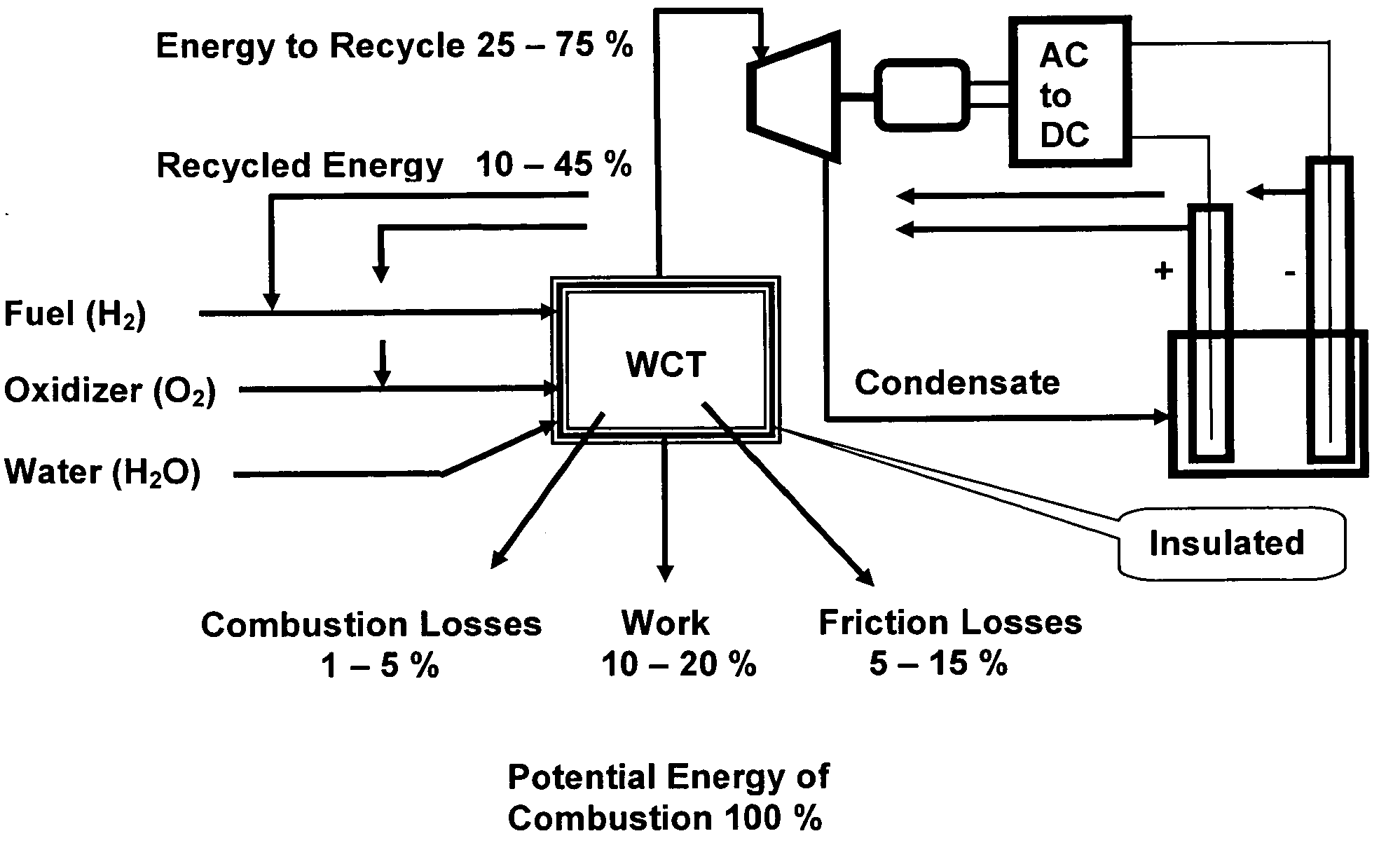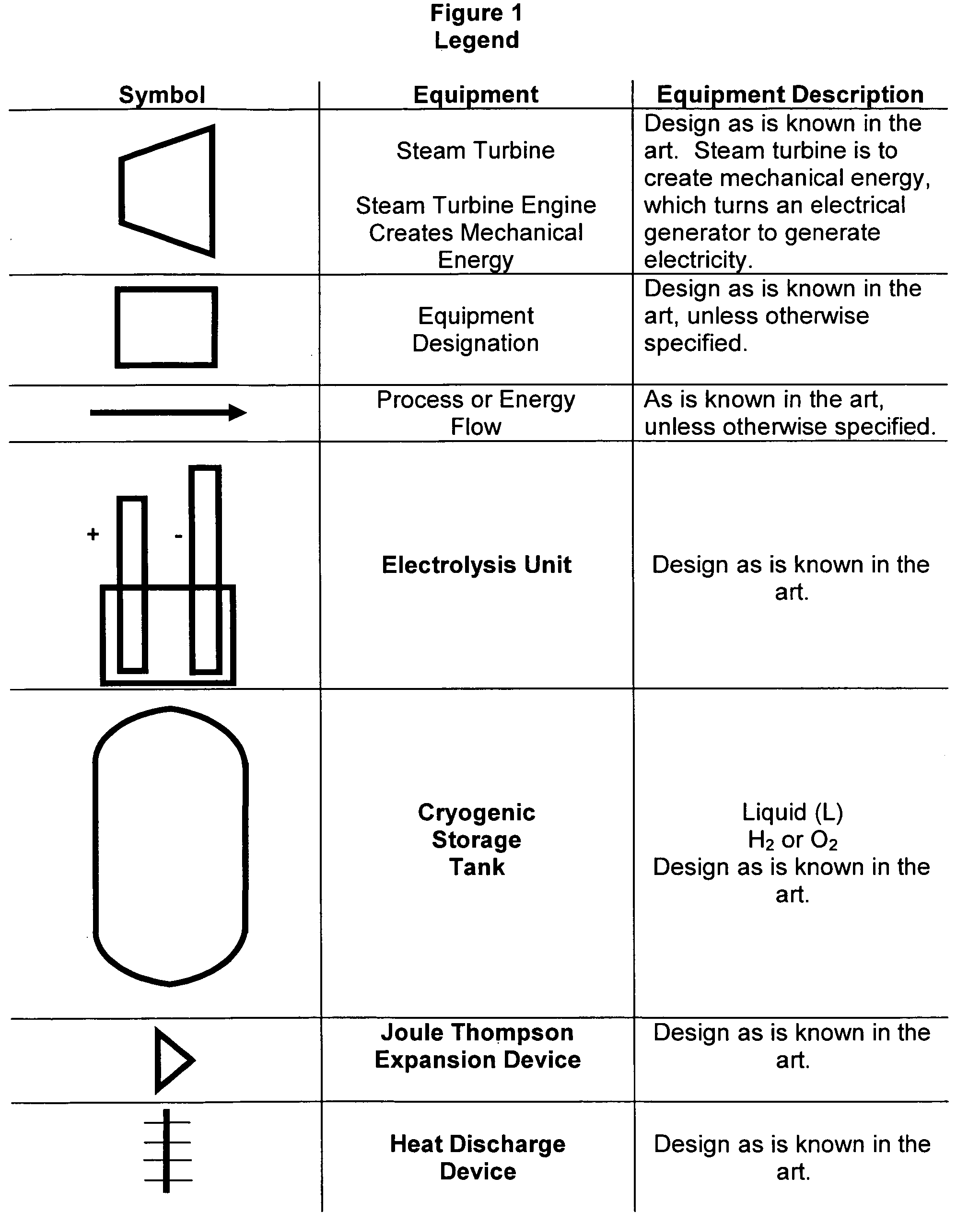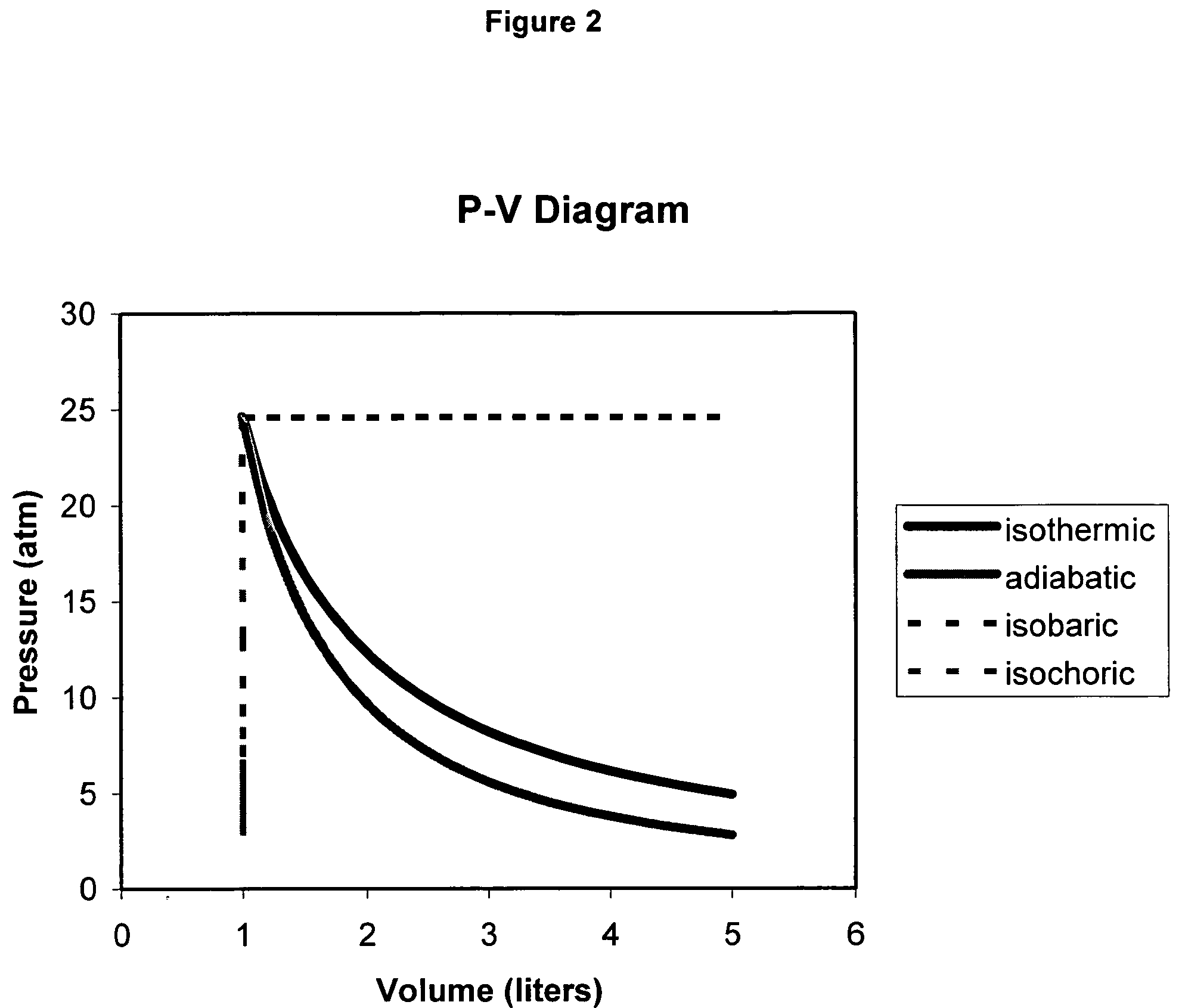Space engine including the haase cycle with energy recovery cooling
a technology of energy recovery and space engine, which is applied in the direction of machines/engines, lighting and heating apparatus, electric control, etc., can solve the problems of excessive hydrocarbon combustion, affecting the environment, and affecting the effect of energy recovery, so as to improve engine power, efficiency and efficiency, and achieve the effect of effective, efficient and economically feasibl
- Summary
- Abstract
- Description
- Claims
- Application Information
AI Technical Summary
Benefits of technology
Problems solved by technology
Method used
Image
Examples
example 1
[0167]An Excel Spreadsheet Computer Model has been prepared for the instant invention. Said Model is the product of this Example in the instant invention, the results of which are presented in Examples 2 through 9.
[0168]Operation of the instant invention is approximated by the cycling of a 4 stroke internal combustion engine as depicted in FIG. 9, wherein path a to b presents an intake stroke during which a H7O vapor-fuel-oxidizer mixture is drawn into the combustion chamber as the piston moves outward. Next, the intake valve closes, wherein the piston moves inward thereby compressing the H2O vapor, fuel and oxidizer mixture; this is depicted to be along the path from point “0” to point “1”. This is process is about adiabatic since it occurs rapidly.
[0169]At approximately near the end of the compression stroke, the mixture is ignited and the pressure increases rapidly along the path from point 1 to point 2. This process happens very quickly, thereby being nearly a pure isochoric (co...
example 2
[0179]Utilizing a computer model developed from the information developed in Example 1, and written into an excel spreadsheet program, FIG. 10 presents results wherein T0=100 K, and within each stroke the moles of H2 range from 0.005 to 0.016 along with the moles of O2 in a stoichiometric relationship to those of H2, and the moles of H2O vary from 0.084 to 0.252.
example 3
[0180]Utilizing the computer model developed in Example 1, and written into an Excel spreadsheet program, FIG. 11 presents results wherein T0=200 K, and within each stroke the moles of H2 range from 0.005 to 0.016 along with the moles of O2 in a stoichiometric relationship to those of H2, and the moles of H2O vary from 0.042 to 0.126.
PUM
 Login to View More
Login to View More Abstract
Description
Claims
Application Information
 Login to View More
Login to View More - R&D
- Intellectual Property
- Life Sciences
- Materials
- Tech Scout
- Unparalleled Data Quality
- Higher Quality Content
- 60% Fewer Hallucinations
Browse by: Latest US Patents, China's latest patents, Technical Efficacy Thesaurus, Application Domain, Technology Topic, Popular Technical Reports.
© 2025 PatSnap. All rights reserved.Legal|Privacy policy|Modern Slavery Act Transparency Statement|Sitemap|About US| Contact US: help@patsnap.com



